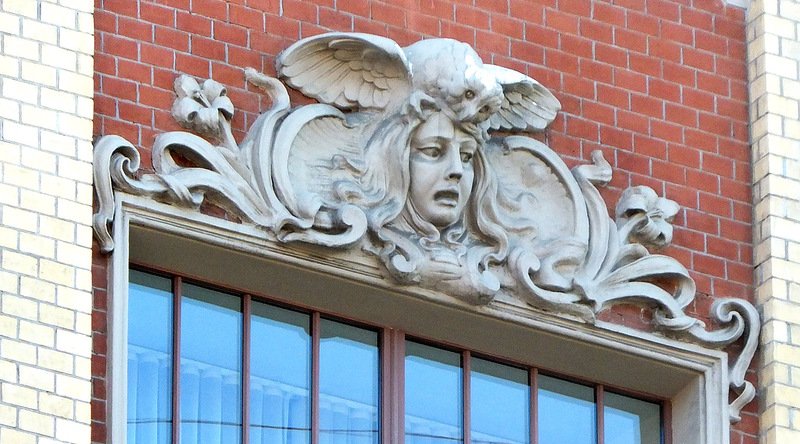#881. Decorative Mascaron with Cherub on Brick Facade
The image depicts a decorative architectural element placed above a window opening on a building facade. It's an exquisite stucco composition in Art Nouveau or Neo-Baroque style, featuring a sculptural female face with long wavy hair, framed by intricate volutes and floral ornaments. Above the woman's head sits a sculpture of a cherub or putti with outstretched wings.
This element is a characteristic example of facade decoration from the late 19th to early 20th century, when architects sought to adorn buildings with rich sculptural details. The mascaron (decorative element in the form of a face) is executed in light-colored stone or plaster, creating an effective contrast with the red brick wall and cream-colored masonry on the sides. The window beneath the decorative element has brown frames and is divided into several sections by vertical mullions.
Such decorative elements were often used to give buildings individuality and artistic expressiveness, emphasizing important architectural features – in this case, the window opening. The sculptural design demonstrates high craftsmanship and attention to detail characteristic of an era when artisans' handwork was highly valued in architecture.
